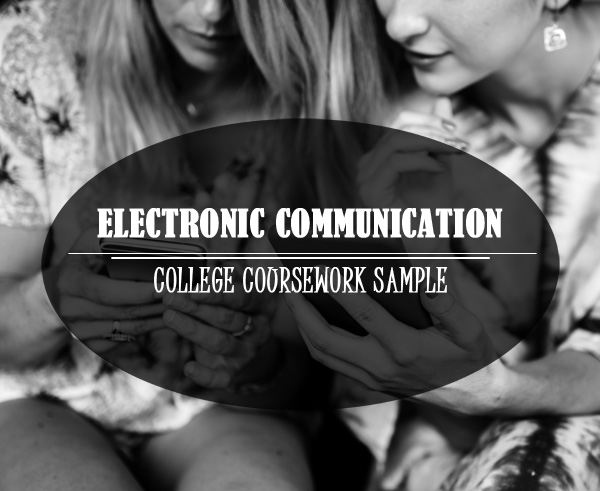
Various threats face electrical contact. These threats may be technical, financial, physical and, cost. One of the most common risks of electrical communication is the power failure, which sometimes leads to equipment failure. Accidents are also a threat to electrical contact. The transmission lines in case of data transfer by the electrical wire may be destroyed through accident. For example, the pole holding up contact wire may be hit by a car. This leads the termination of the information signal in the transmission line.
This can be prevented by using stronger post that cannot be easily knocked down by cars. Natural disasters are a threat to the electrical connection this is because when they occur. The electrical communication systems get destroyed. For instance, when earthquake happens they tear up communication infrastructure. This completely disables the electrical communication system. This can be avoided by building communication infrastructure that can withstand earthquake shock. Malicious people can do deliberate physical attack.
The attack may disable the electrical communication devices attacked. Human error is also a threat to communication system. In fact, most of the electrical communication failures are caused by human error. Human error can be avoided by user being keen and attentive when handling the communication devices.
Data tampering when is in transit is one of the major threats of electronic communication. A malevolent third party can tampers with the data during transit. Example of data attack in transit is altering the amount of money transfer electronically from one bank account to another, i.e. changing $2000 to $ 20000. This attack can be prevented by interjecting whole set of a valid transfer into the network. This can be done by repeating an adequate $2000 money transfer a thousand times. Eavesdropping; it is secretly listening conversation without the communicating parties consent. For instance, in local area network (LAN) insiders hardwired to the network can access information that is they do not have clearance for. Also, network sniffers are installed on network traffic to eavesdropping (Albert, A. L. 1934).
Falsifying User Identities; all the users in the system must be known, to prevent falsifying user identities. Distributed network is prone to user identity falsification, which may lead to an unknown user accessing sensitive information. Individuals in electronic communication are facing identity theft. Internet hackers are stealing driver’s license numbers and credit card numbers. Criminals use this information to set up fake credit account using a stolen identity Moreover; non- repudiation is threat to identity. Criminals steal someone’s digital signature and use it to do illegal activities. The owners of the signing key can be held responsible for the illegal activities (Lin, X. 2008).
Password-related threats, in gigantic systems, the system user is required to memorize multiple passwords for the various application and services they use. For instance, a user can access several computers to on a workstation for testing and managing configurations of a development application and a personal computer for checking email. To remember the password they may use a word found in the dictionary. Dictionary attack can crack this password. The user with complex passwords may write them down on a piece of paper. If the paper fall on an attacker hands, the communication system is compromised. Lack of accountability can occur in electrical communication systems. This is seen when the system administrator cannot monitor all user’s activities in the system. Thus, the user are cannot be accountable for their activities.
Sophisticated user management requirements are a considerable threat to electrical communication; network may have complicated user management requirements. Any communication system must support several hundreds of users. Therefore, the system must be scalable. Due to the system large size managing password and accounts becomes hard which makes the system prone to attacks and error. To have a reliable security all the users in the system must be identified.
Some of the recommendation to the electrical communication technologies providers on how to protect their information transmission systems is. Providing users wireless data transmission with robust encryption. Secondly, the radio network has to be designed to cope with automated failover and redundancy. The communication systems towers must have lightning arrestors. In addition, the electrical communication system makes use of overlapping coverage, in addition to it can pose fallback and lessen operation modes if equipment failure occurs. The modern communications managing systems are now capable of promptly identifying when the equipment fails, thus immediately sending an alarm to the concerned party. Besides, a lot of them utilize full substantial sensors for tracking humidity, as well as temperatures. The electrical communication devices that are handled are rugged. Thus, they can withstand impact, properly work under external temperatures, and be smoke resistance and water proof (Lin, X. 2008).
The regulatory body guide engineer on how to effectively deal with development mythologies. For instance, encryption algorithms and methodologies are incorporated in the association of public safety communication officers (APCO) project 25 and Terrestrial Trunked Radio (TETRA) standards for digital radio systems, and several vendor supply cryptographic implementation that are certified as compliant National Institute of Standards, Federal Information Processing Standards FIPS-140-1 as well.(Voice radio communications guide for the fire service manual: a basic guide to system concepts and equipment. 2008).
Reference
- Lin, X. (2008). Secure and Privacy-Preserving Vehicular Communications.
- International Western Electric Company. International Standard Electric Corporation (New York, N.Y.), Standard Telephones and Cables (London, England), International Telephone and Telegraph Corporation., & Alcatel N.V. (1922). Electrical communication. New York: International Western Electric Co.
- Albert, A. L. (1934). Electrical Communication. New York: Wiley.
- Voice radio communications guide for the fire service manual: a basic guide to system concepts and equipment. (2008). Emmitsburg, MD: United States Fire Administration // International Association of Fire Fighters.